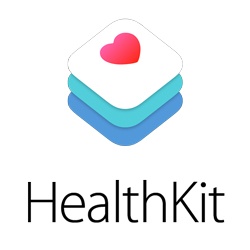Dr. John Grubb has been of great help and an invaluable resource. He has most recently followed up to make work item ACT-6 A Digital Standard for Sharing Orthodontic Photographs progress steadily. We really hope he will still find time to volunteer work with us. His feedback is greatly appreciated and he will always be welcome to join us, physically or remotely.
Thanks John!
It is time for me to step down as a representative of the American Association of Orthodontists and the American Board of Orthodontics to the Standards Committee on Dental Informatics (SCDI). The journey has been enjoyable working with so many talented and committed professionals; and, I will miss greatly the camaraderie.
I wish you and all of the people involved in the SCDI process the very best for the future success of this very important process!
Very respectfully,
John
John E. Grubb, DDS/MSD
Nuove regole prevedono che
- ci sia un ulteriore consenso al trattamento dei dati che tratti specificamente il gestionale elettronico;
- il paziente abbia la possibilità di non accettare che i propri dati vengano inseriti in un gestionale
lo studio informi al "Garante"
entro 48h in caso il vostro sistema sia stato hackato e ci fosse il rischio, quindi, che i dati sensibili siano stati (volutamente o non) rilasciati a persone non autorizzate a leggerli.
Vedi Anche
- http://www.odontoiatria33.it/cont/gestione-dello-studio/contenuti/9903/dossier-sanitario-cartella-clinica-elettronica.asp?xrtd=
- http://www.studiolegalestefanelli.it/it/articoli-legali/ehealth-nuove-regole-garante-gestione-dossier-sanitario-adelliponti
- http://www.garanteprivacy.it/web/guest/home/docweb/-/docweb-display/docweb/4084632
Overview
When orthodontic practices go paperless, the question of resolution arises: what is the best resolution to scan documents? Rumors say that 300 DPI is the level that is suggested on-line for preservation of materials which will be destroyed but need to be maintained from a legal perspective. However, this resolution produces large amounts of data and can eat up drive space quickly.
X-Ray
Paper
See Also
- http://blog.legalsolutions.thomsonreuters.com/practice-of-law/the-paperless-law-practice-getting-the-most-out-of-your-scanner/
- http://www.slideshare.net/appfolio/green-paperless-a-property-managers-competitive-advantage
On August 15th the AAO Bulletin published an article discussing the importance of establishing what medically necessary orthodontic care actually means. This has become crucial, ever since the Affordable Care Act (ACA) introduced benefits for orthodontics as part of the embedded pediatric (dental) medical policies... only available to those patients whose cases are considered to be "medically necessary".
See article below.
We are moving forward on our effort to provide a document that can explain developers/vendors how to exchange a set of images in a specific layout using DICOM (i.e. Structured Displays). So say provider provider A wants an opinion from provider B: A will send clinical data (with a set of images) and will expect B to be able to see the images in the exact same layout that A sees them, as this will simplify the collaboration. Thanks to DICOM Structured Displays, this will be possible even:
- by sending all images with relevant information, such that the receiving system will know what they are and where to store them.
- without creating a static composite PDF or JPEG file, with all the images inside.
So the ABO (American Board of Orthodontists) already defined a standard layout for their board exams. But that was just one layout. We are defining 3 layouts (which will serve as examples for the documentation), and are asking the ABO if we can call them ABO-01, ABO-02 and ABO-03.
The ABO (American Board of Orthodontists) already defined a standard layout for their board exams. But that was just one layout. We are defining 3 layouts (which will serve as examples for the documentation), and are asking the ABO if we can call them ABO-01, ABO-02 and ABO-03.
The Office of the National Coordinator for Health Information Technology has released in April version 2 of the Guide to Privacy and Security of Electronic Health Information. Here's an excerpt from their website:
Need help implementing the Health Insurance Portability and Accountability Act (HIPAA) Privacy, Security, and Breach Notification Rules in your health care practice? Check out the Guide to Privacy and Security of Electronic Health Information [PDF - 1.27 MB].
The Office of the National Coordinator for Health Information Technology (ONC), in coordination with the U.S. Department of Health and Human Services (HHS) Office for Civil Rights (OCR), created the Guide to help you integrate privacy and security into your practice. The Guide covers a variety of topics highlighted below. Download a pdf of the full Guide [PDF - 1.27 MB] to learn more.
References
- http://www.healthit.gov/sites/default/files/privacy-and-security-guide.pdf
- http://www.healthit.gov/providers-professionals/guide-privacy-and-security-electronic-health-information
Information blocking occurs when persons or entities knowingly and unreasonably interfere with the exchange or use of electronic health information. This report focuses on potential information blocking by health care providers and health IT developers, including vendors of EHR technology.
Here's the April 2015 report from the Office of the National Coordinator for Health Information Technology (ONC) to the US Congress explaining the obstacles to implementing interoperability and informatics standards. The federal government has spent $28 billion on health IT and Congress wants to know the details of information blockage.
This report (see link below) from ONC to Congress was discussed at the April 21 meeting of the Illinois Health Information Exchange Advisory Committee. The gist of the discussion was that the pilot studies on EHR interoperability have been excellent, but further progress will be difficult due to the reluctance of vendors and stodgy institutions to adopt existing informatics standards, especially HL7 standards. The Chair likened the situation to selling cars, saying that the states will have to mandate features that software must have in a manner similar to emission standards for cars. Our dental software vendors are lagging also.
http://www.healthit.gov/sites/default/files/reports/info_blocking_040915.pdf
The DICOM Editor, David Clunie informs that the 2015b release of the DICOM standard is now available from the NEMA ftp site:
ftp://medical.nema.org/MEDICAL/Dicom/current/
It is also indexed from the DICOM Editor's status page at:
http://www.dclunie.com/dicom-status/status.html
This replaces the 2015a release.
Release notes are at:
ftp://medical.nema.org/medical/dicom/current/output/pdf/releasenotes_2015b.pdf
The changes from the 2015a release are shown highlighted in PDF files; note that changes to figures are not detected and some changed figures are not rendered in the diff files:
http://www.dclunie.com/dicom-status/status.html#DiffsStandard2015a2015b
Apple announced the healthkit recently. A dive into the medical world. The idea is simple even though there has been an explosion in the number of mobile fitness apps which aim to track everything from food consumption to blood sugar levels, there was no way for doctors to get that information. HealthKit aims to bridge that gap by connecting medical providers and medical researchers with that health data.
The move is exciting, however, will Apple make use of an existing medical informatics standard? Is the Apple Healthkit making use of any existing medical software standard?
As far as i can tell, they are not. Apple's trend is to re-invent and come up with better ways of solving problems.
The purpose of the Healthkit, appears for now to be research only. It sounds, though, as if it could become the leading medical information exchange system. Similarly to what happened with ApplePay, Apple might come up with an easy way for a patient to send their clinical records to a provider, maybe even through an AppleWatch, and it most likely won't be using HL7 FHIR! Hopefully there will soon be bridges out there. Even with bridges, HealthKit doesn't model the medical field to the extent HL7 does, not even remotely.
It's just that the thought that Apple could be, possibly, maybe the future of medical informatics standards scares me. But then again, it most likely will not be...
See Also
- http://www.informationweek.com/healthcare/mobile-and-wireless/apple-partners-with-epic-mayo-clinic-for-healthkit/d/d-id/1269371
- http://www.fiercemobilehealthcare.com/story/stanford-app-connects-ehr-apples-healthkit/2015-02-22
- http://dovetail.co/blog/apple-healthkit-dental-ehrs/
- http://www.quora.com/What-do-doctors-think-of-HealthKit
- http://motorcycleguy.blogspot.it/2014/06/ios-healthkit-hype-and-fhir.html
- http://blog.jaredsinclair.com/post/89292422325/healthy-skepticism-my-critique-of-healthkit-as
Orthodontic Products (12/19) reports, “The American Association of Orthodontists (AAO) Board recently met in St Louis and approved policy language on medically necessary orthodontic treatment.” Orthodontic Products reports that the AAO “will support bifurcated policy structure characterized as traditional orthodontic cases and medically necessary orthodontic cases, to include the use of diagnostic codes (SNODENT or ICD10) in lieu of diagnostic indices.” Additionally, the AAO “will call for universally accepted diagnostic records (intra-oral and extra-oral photos—panoramic image and lateral ceph) for claims submission” and “will support the use of auto-qualifiers to determine medical necessity rather than more subjective indices; and will advocate for higher reimbursement for medically necessary cases.”
At today's DICOM WG22 (DICOM in Dentistry) meeting held at the Radiology Society of North America at McCormick, the ADA SCDI told us that the ADA has funds to hire a consultant for the technical DICOM aspects of the visible light project dealing with images and templates.
A Structured display is a view of various images at once. The intent of this standard is to allow for various entities to share a set of images, and be able to all seem laid out the same way. An application could be, for example, the ABO board exams: the student could submit the images in a specific DICOM template, which he or she could generate with any DICOM compatible application that would support such functionality, which, hopefully at some point, most orthodontic software package would support.
DICOM is reviewing a correction package (DICOM CP14_XX: Radiation attributes to X-Ray 3D CRANIOFACIAL Image IOD) in order to be able to store more radiation based information along with the image for 3D craniofacial images. This has been submitted by Andrew Casertano for review by the DICOM WG 22 and discussion. The review will take place on 2014-12-03.
This is an interesting work by a Brasilian team, which proves as a great implementation of HL7 v3.
I think this could be a great read for those interested in implementing HL7 and integrating it with existing non-HL7 software.



